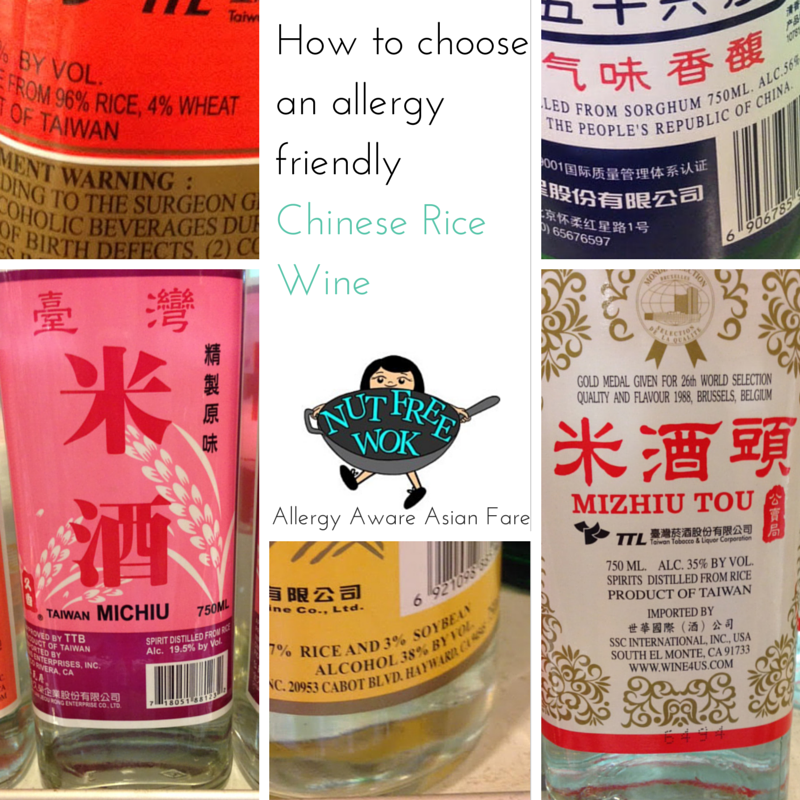
Choosing an allergy friendly Chinese rice wine will help your dishes taste just right. Usually recipes recommend using dry sherry as a substitute. Since I don’t drink, I don’t have dry sherry at home. I might as well figure out how to buy a nut-free and allergy-friendly Chinese rice wine.
Disclaimer: Please check that all ingredients are suitable for your allergies and be sure to ask your medical care team regarding any allergy related questions (I do not share medical advice). As an Amazon Associate, I earn from qualifying purchases.
How to Use Chinese Rice Wine
Rice wine in the right dishes, in the right amounts makes Chinese food taste so good. It is an acidic ingredient that is often used to tenderize meats in a dish.
People also use Chinese rice wine to deodorize meat that might have a gamey scent.
A splash of rice wine near the end of making a stir fry will create a lot of steam. The big puff of steam on the pan will flash cook the stir fry the rest of the way.
Shopping for Chinese Rice Wine
My parents used to buy brown bottles of rice wine in glazed earthenware with a cork stopper. They used it for cooking and drinking. High quality rice wine is served in little cups for sipping. The cups are larger than a thimble but smaller than a shot glass.
I couldn’t partake of the rice wine but admired the beautiful bottles. They were simple with a dainty narrow neck, a curvy body, glazed with various shades of brown and sometimes decorated with flowery designs. They are not as common now but they are sold in stores packaged as a gift.

So Many Chinese Rice Wine Options!
I could have just selected my very first bottle of rice wine with a little chant of eeeny, meeny, miny mo because there are so many different options.
Some Chinese rice wines are bottled in 2 liter plastic bottles, like a bottle of soda. In contrast, some are bottled in beautiful clay jars.
It’s a little bit worrisome to see “unfit for consumption” on the label which means that the wine has salt in it and is meant for cooking purposes. And then there are Chinese rice wines that are beautifully packaged to give away as gifts.
Some are clear and some are dark brown in color. There are so many varieties, it’s hard to know to choose.
Many different brands look alike when they are sold in a brown glass bottle with a red label. I bought a random bottle many years ago but poured it down the drain because it tasted awful. I gave up and used Japanese mirin as a substitute.
Rice Wine Facts
But as an allergy mom blogger, I want to share a little bit of culture and traditions with her sons. I have thought about using more traditional ingredients and taking the time to source out nut-free and allergy safe ingredients from reliable manufacturers.
Motivated by a Nut Free Wok reader, Nancy, who wanted to know about an allergy safe rice wine, I did some online research and learned how it is made in one of my favorite food books, On Food and Cooking: The Science and Lore of the Kitchen by Harold McGee.
Types of Rice Wines
- There are many kinds of rice wines in different Asian cultures. Meijiu is a generic name that refers to rice wine. People using use huangjiu (yellow wine) for Chinese cooking.
- Just as there is wine and then there’s Napa wine, there’s rice wine and then there’s Shaoxing rice wine which is a type of rice wine from the Shaoxing, Zhejiang area in China.
- Shaoxing rice wine is the most well known rice wine from China. It’s a rice wine that is infused with Chinese spices. People with a spice allergy might want to avoid and opt for a clear rice wine instead.
- Huadiao jiu is a specific kind of rice wine from Shaoxing and associated with the tradition of burying a large jar of rice wine at the birth of a daughter and serving it on her wedding day. Andrea Ngyuen recommends Pagoda Brand, which I’ve never tried nor checked out the possible allergens. Her write up is helpful if you wish to learn more about the non-allergy related aspects related to choosing a rice wine.
Rice Wine Ingredients
- Some rice wines might have a label saying that they are “unfit for consumption,” which can be concerning. That just means that the rice wine has been seasoned with salt for the purpose of cooking only.
- Chinese rice wines are made from sweet glutinous rice and sometimes wheat or other grains that are cooked, shaped into rice cakes, and then left to develop mold, and then dried until the maker is ready to ferment the rice wine. After brewing the rice wine is filtered, pasteurized, aged, and then packaged. Sometimes caramel coloring is added.
- It’s possible that the rice wine could be fermented with wheat, barley, millet, sorghum, and/or peas as additional ingredients.
- Alcohol content of by volume is usually around 20%.
- Do not confuse rice wine with rice vinegar or rice wine vinegar.
Finding a Tasty Rice Wine
This time around I asked a slightly older lady who was also shopping in the rice wine section for her recommendation. She pointed out her favorite rice wine, Tai Jade Michiu by TTL, a popular brand from Taiwan. Still a semi-random purchase, but better than before!
The same company also has an award winning rice wine, Meizhui Tou, but since it costs twice as much I opted for the mid-priced rice wine instead. I’m pleasantly surprised with better results and still continue to use the same Chinese rice wine.
I also called the distributor who told me that their Michiu rice wine is made in a rice only facility. If the representative for the distributor and I understood each other correctly, this product would be free of the top 9 allergens.
Allergy Aware Conclusions about Rice Wine
Did you know that up until recently, there are no requirements to label alcohol for allergens? “TTB has issued a notice of proposed rulemaking, Notice No. 62, 71 FR 42329, which proposes to make the labeling of major food allergens mandatory. In addition, we have published an interim rule, T.D. TTB-53, 71 FR 42260, which sets forth standards for optional allergen labeling statements.” These rules are long overdue!!
Very few rice wine makers have a phone number to call or a website to check out and even if they do, I feel that clear communication is still limited. However, it seems from my research that it’s highly unlikely that there will be any cross contact with most of the top 8 allergens except for wheat, especially in Shaoxing or huadiao varieties.
If one has an allergy to soy, peas, millet, or sorghum, be sure to thoroughly inspect the labels. Now that I understand the choices better, I would will pay more for a high quality rice wine that is not seasoned with salt nor colored with caramel.
If wheat allergies are a concern, a safer alternative might be Japanese mirin which is made with only rice. And if Chinese rice wines are not available in your stores, dry sherry, sake, or mirin are other alternatives.
Be sure to check out What’s in Nut Free Wok’s Cupboard? Nut-Free Ingredients for more nut-free ingredients to help you shop for Asian cooking ingredients.
Related Recipes Featuring Rice Wine
Lu Rao Fan, Braised Pork and Egg Rice Bowl, Easy Instant Pot Recipe – use rice wine in this recipe to tenderize the braised pork and also to remove some of the gamey flavors of the meat.
Nut Free Chinese New Year Vegetable Stew “Jai” Recipe – my friend taught me to rinse the black moss with Chinese rice wine to clean it.
Easy & Low-Fat Chinese Salt and Pepper Garlic Shrimp Recipe – an example of flash cooking the shrimp using a splash of Chinese rice wine.
Thanks for reading, please help Nut Free Wok!
If you like this post or recipe, please be sure to give a 5 star rating, leave a comment, and share this post! Your support means a lot to me.
Subscribe to Nut Free Wok’s email subscription (be sure to respond to the confirmation email). You will be notified by email next time I publish another post or recipe and I won’t send you spam or share your email address with anyone.
Disclosure/Disclaimer:
I may mention the names of stores and/or brand names of products that I use because readers ask and I share products and sources which I use and think may be helpful to readers, all opinions are my own. Please note that manufacturing practices and ingredients can change at anytime without notice and readers are always responsible for assuring allergen safety before buying or consuming foods. NutFreeWok.com is a participant in the Amazon Services LLC Associates Program, an affiliate advertising program designed to provide a means for sites to earn advertising fees by advertising and linking to Amazon.com. Thank you for reading!

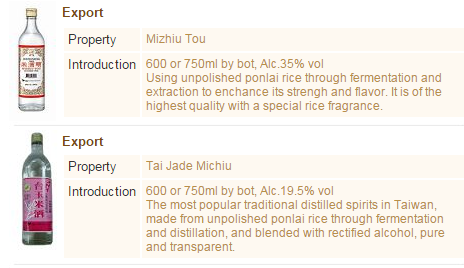
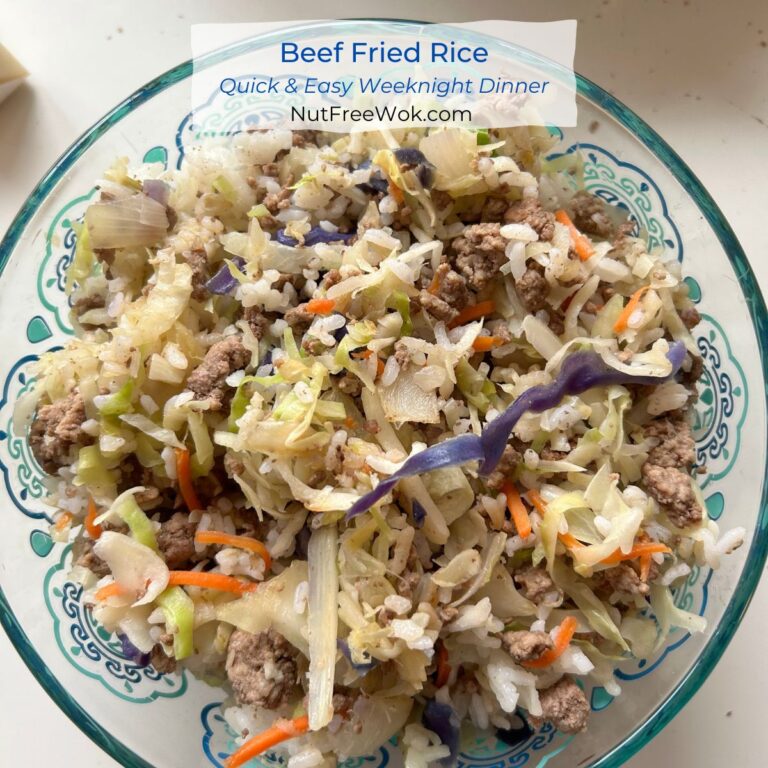
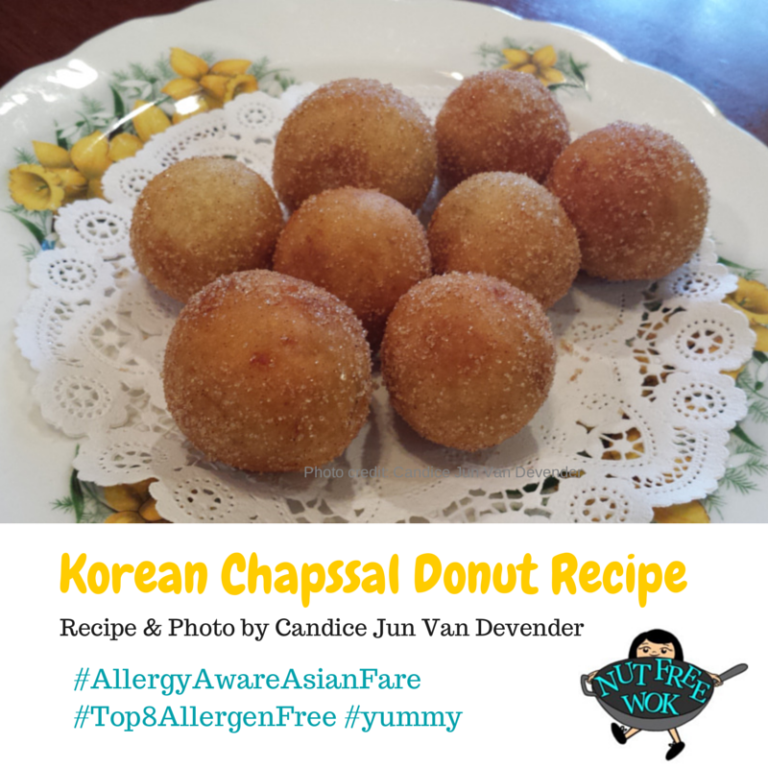
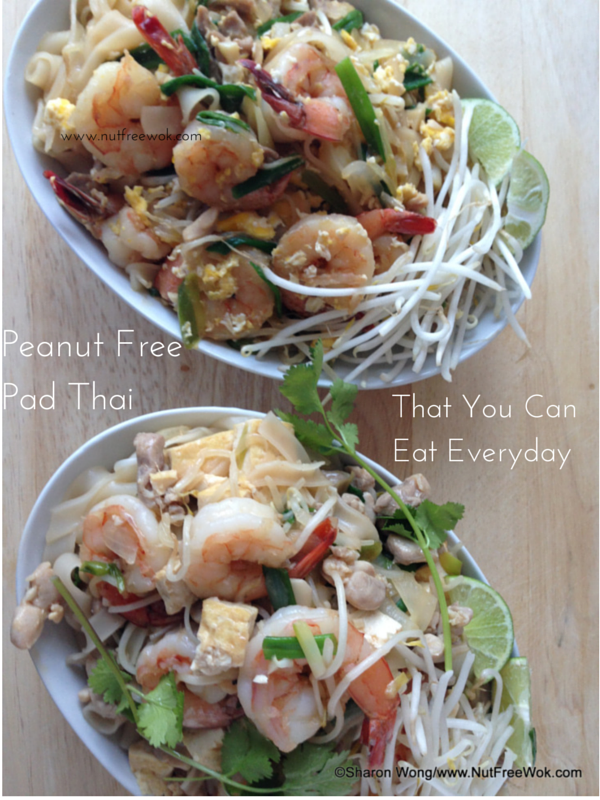
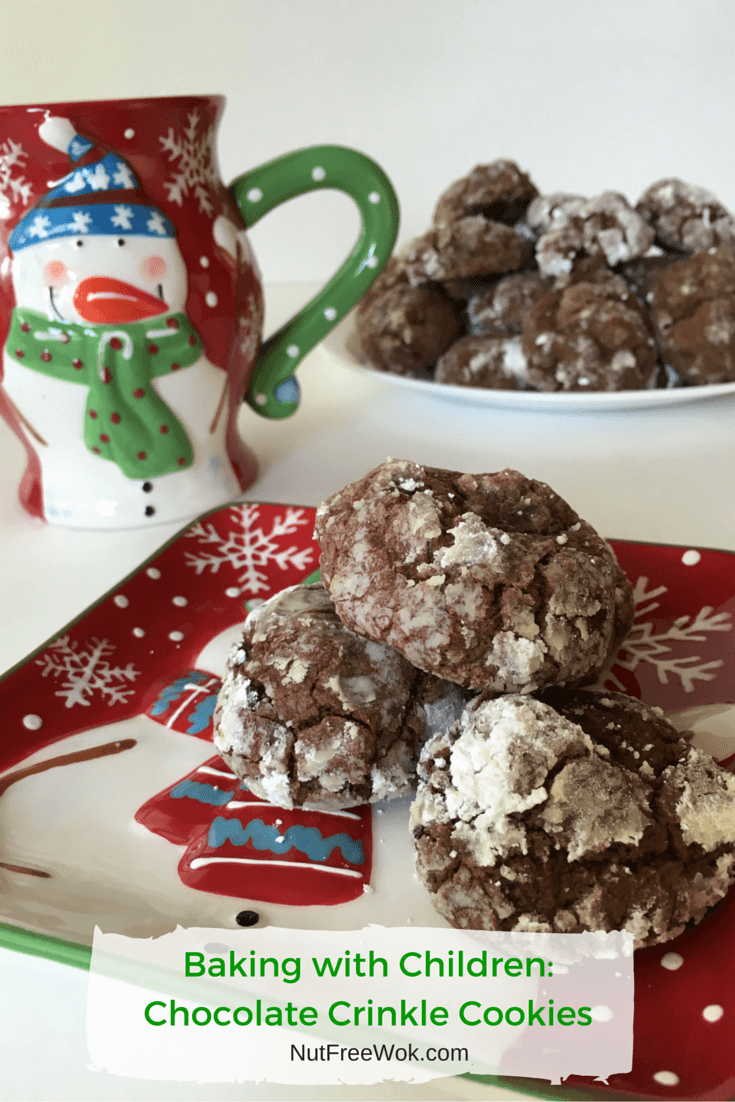
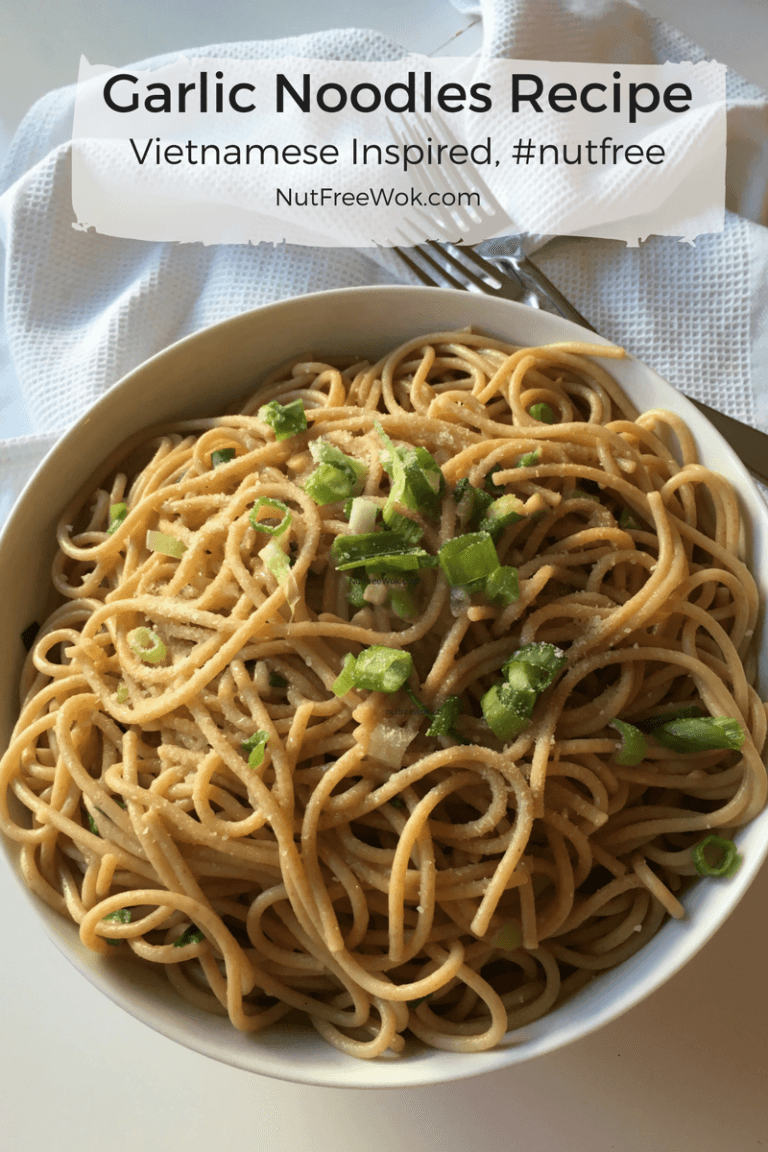
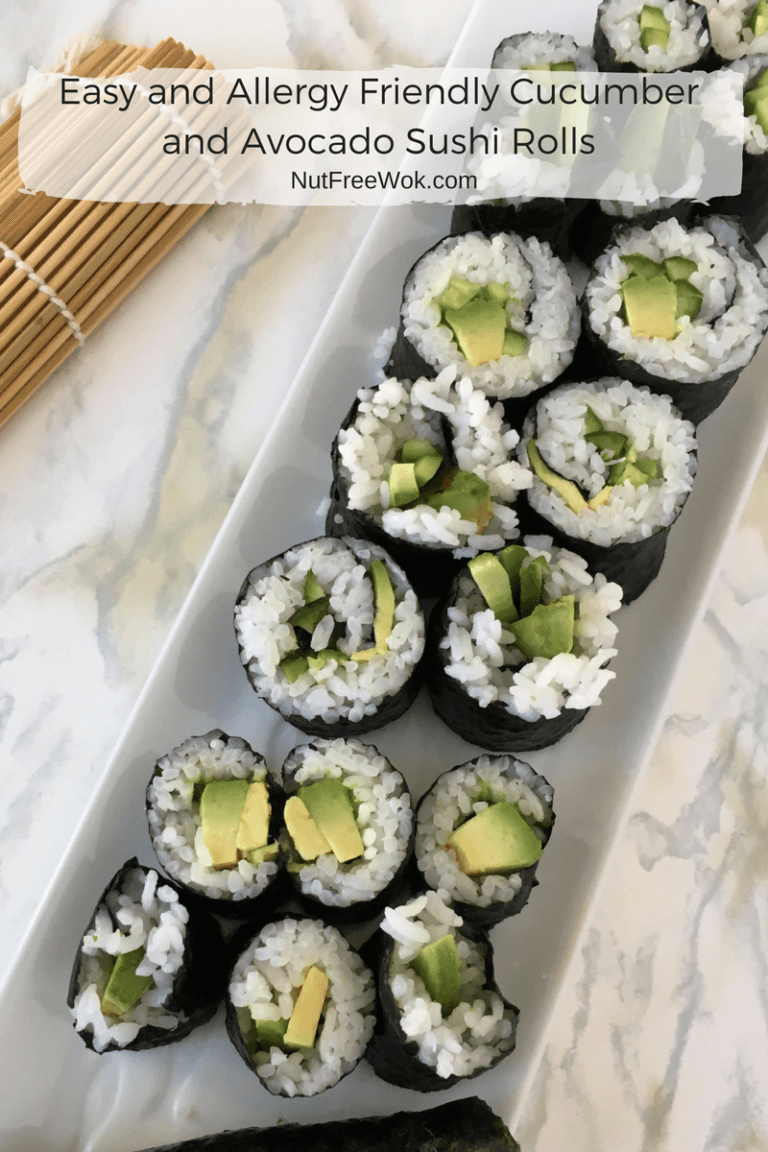
Brilliant! You are the Asian food allergy goddess.I love Asian foods, but am far too scared to try. I really appreciate your recipes and instruction!
Caroline, thank you!! I totally want to jump into the car for a visit when you share photos of desserts and Greek food. We just have no choice but to adapt, and it seems we have foodie offsprings who like really good food, so we have to up our game, don’t we? <3 <3
Thanks for the post and researching options! One item less to check in my goal for to cook authentic Chinese food.